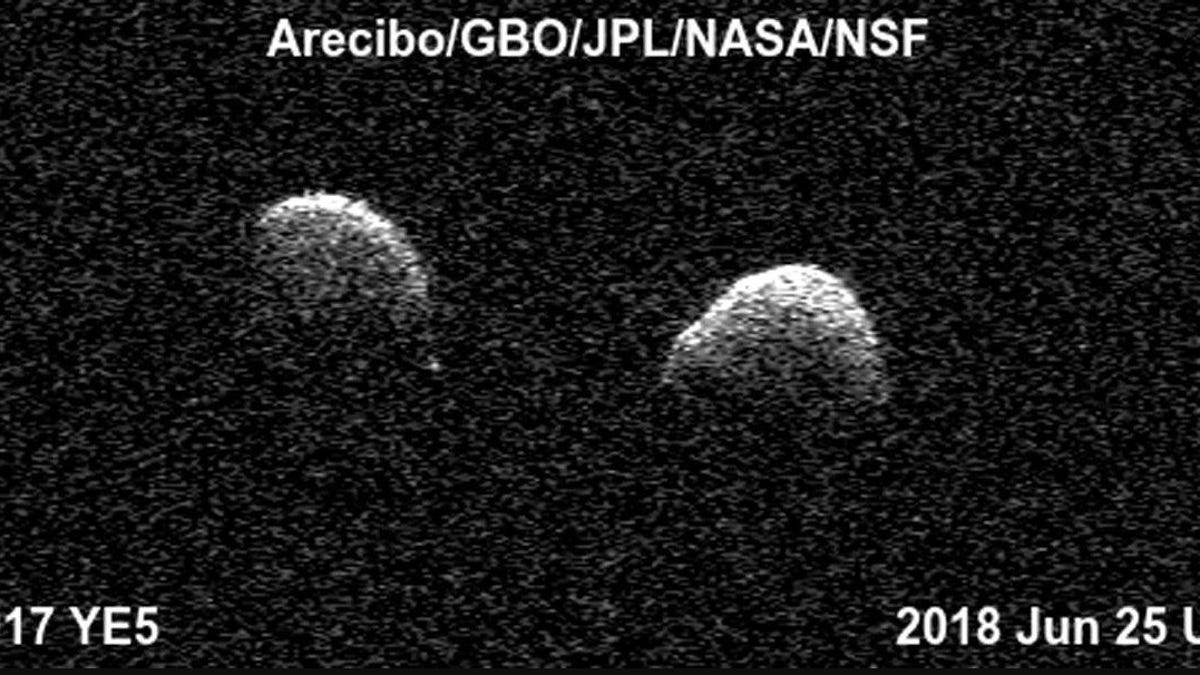Earth-buzzing asteroid has NASA scientists seeing double
It's twice the fun, as a big asteroid turns out to be twins.

This radar image of binary asteroid 2017 YE5 comes from the Arecibo Observatory in Puerto Rico.
Asteroid 2017 YE5 made the headlines when it slipped by Earth last month. Scientists estimated it to be taller than Burj Khalifa, the tallest skyscraper on our planet. On Thursday, NASA revealed something much more intriguing: asteroid 2017 YE5 is really two space objects orbiting each other.
Three different radio telescopes observed the asteroid as it came close to Earth. Scientists initially noticed what they thought were two lobes, but a closer look showed a gap between the distinct parts.
The two objects are roughly the same size, which is a much rarer occurrence than binary asteroids, where one is much larger than the other. The pair revolve around each other once every 20 to 24 hours.
Radar imaging suggests "the two rocks do not reflect as much sunlight as a typical rocky asteroid" and are "likely as dark as charcoal," NASA said.
Images from the Goldstone and Arecibo observatories show a big difference in the radar reflectivity of the two objects. Researchers think the asteroids "may have different densities, compositions near their surfaces, or different surface roughnesses."
Scientists are still analyzing the optical and radar data and hope to determine the binary asteroid's density to learn more about the pair's composition, internal structure and formation.
Though it's classified as potentially hazardous, the asteroid's June visit was the closest it'll come to our planet for at least 170 years.

